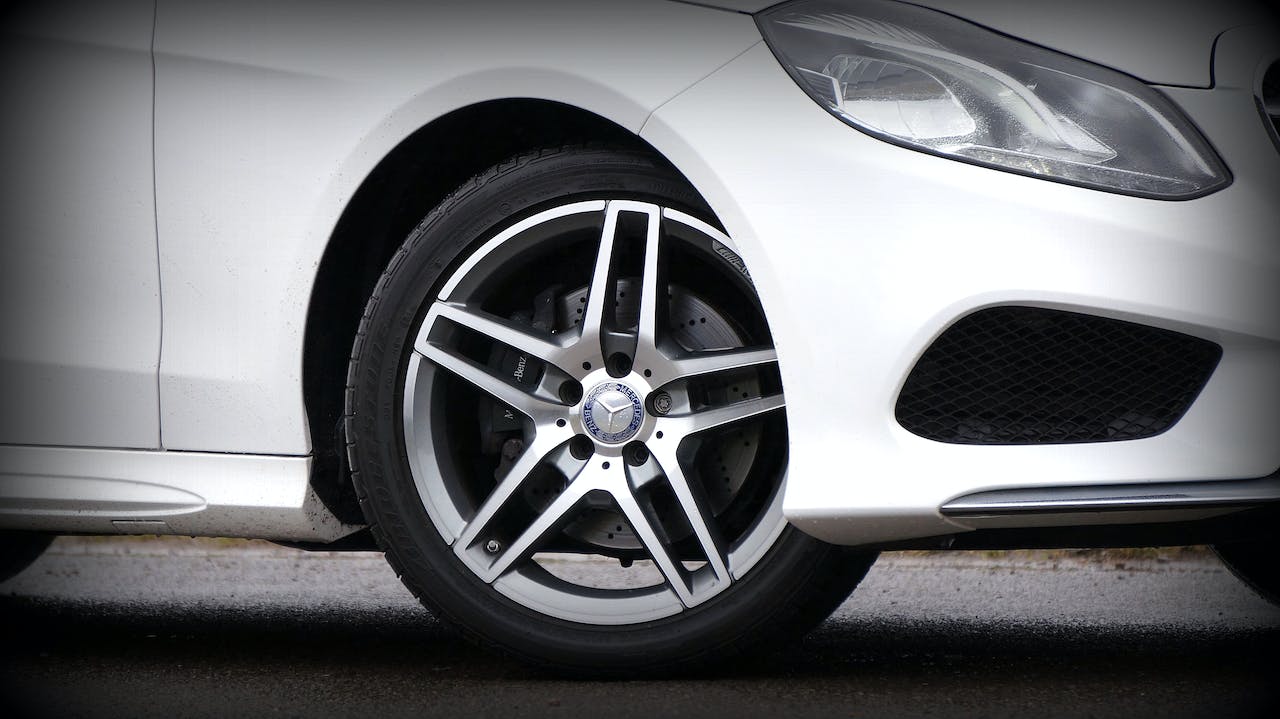Lowering your car can significantly alter its ground clearance, impacting its performance and safety. Understanding the implications of this modification is crucial for every driver. Whether you are navigating speed bumps, potholes, or steep driveways, knowing how ground clearance influences your driving experience is essential. By delving into what every driver needs to know about ground clearance after lowering their car, you can make informed decisions to optimize your vehicle’s functionality and avoid potential pitfalls. Stay tuned to uncover valuable insights that will enhance your driving journey.
Understanding Ground Clearance
Definition
Ground clearance refers to the distance between the ground and the lowest part of a vehicle, typically the undercarriage. This measurement is crucial as it determines how high off the ground the vehicle sits.
Ground clearance plays a vital role in ensuring that the vehicle can navigate various terrains without getting damaged. It impacts the ability to drive over obstacles, speed bumps, or uneven roads without scraping the bottom of the car.
Driving Techniques and Vehicle Handling
Lowering a car reduces its ground clearance, which can have both positive and negative effects on driving. While a lowered car may offer improved stability due to a lower center of gravity, it also means less clearance for road irregularities.
When driving a vehicle with reduced ground clearance, drivers need to approach obstacles with caution to avoid damaging the undercarriage. They may need to adjust their driving techniques to accommodate the lower ride height.
Importance in Off-Road Scenarios
In off-road situations, having adequate ground clearance is essential for maneuvering through rough terrain. Vehicles with higher ground clearance can tackle obstacles like rocks, mud, and fallen branches more effectively than those with lower clearance.
Off-road enthusiasts often opt for custom modifications to increase their vehicle’s ground clearance. This customization allows them to navigate challenging landscapes with greater ease and reduces the risk of getting stuck or sustaining damage.
Pros and Cons of Ground Clearance Modifications
Pros:
-
- Enhanced off-road capabilities
- Improved obstacle navigation
- Reduced risk of undercarriage damage
Cons:
-
- Potential impact on vehicle stability
- Limited access to low-clearance areas
- Increased susceptibility to bottoming out
Axle Clearance Considerations
Importance of Axle Clearance
Axle clearance refers to the distance between the axle differential and the ground. It is a critical factor to consider, especially after lowering a car. This distance plays a significant role in ensuring the vehicle’s stability and performance on various terrains.
When a vehicle has a solid axle suspension, axle clearance becomes even more crucial. Solid axles are commonly found in trucks, SUVs, and off-road vehicles. These types of suspensions rely heavily on adequate axle clearance to navigate rough and uneven terrain effectively.
Impact of Inadequate Axle Clearance
Insufficient axle clearance can result in severe damage, particularly during off-road driving. If the axle is too close to the ground, it increases the risk of hitting obstacles like rocks, tree roots, or uneven terrain. This can lead to damage to the axle, differential, or other vital components underneath the vehicle.
Pros:
-
- Enhanced stability and performance on rough terrain.
- Reduced risk of damage to essential components.
Cons:
-
- Limited ground clearance may restrict off-road capabilities.
- Lowered axle clearance can impact the vehicle’s ability to tackle obstacles effectively.
Maintaining Adequate Axle Clearance
To ensure optimal performance and protection for your vehicle, it is essential to maintain adequate axle clearance. This can be achieved by installing lift kits or adjustable suspension systems that allow you to customize the ride height according to your specific needs.
When modifying your vehicle’s suspension, it is crucial to consider factors such as tire size, intended use (on-road vs. off-road), and overall driving conditions. By adjusting the axle clearance appropriately, you can strike a balance between aesthetics and functionality while safeguarding your vehicle from potential damage.
Suspension Clearance Factors
Suspension Components
Suspension clearance refers to the distance between the suspension components and the ground. It is crucial for ensuring that the vehicle operates smoothly over various terrains. Lower control arms are typically the lowest points in independent suspension systems, making them vulnerable to damage if the clearance is insufficient.
Maintaining adequate suspension clearance is essential for vehicle stability and overall performance. When lowering a car, it’s important to consider how this modification affects the clearance between the suspension components and the ground. Inadequate clearance can lead to scraping, bottoming out, or even compromising the handling of the vehicle.
Importance of Ground Clearance
Low suspension clearance can result in a range of issues, including reduced handling capabilities, increased wear on suspension components, and potential damage to the undercarriage. On the other hand, sufficient clearance allows for smooth operation and better protection of critical parts.
Pros:
- Improved handling and performance
- Enhanced protection for suspension components
Cons:
- Risk of scraping or damage in low-clearance situations
- Potential compromise in vehicle stability
Maintenance Tips
To ensure optimal suspension clearance after lowering a car, consider upgrading to adjustable coilovers or air suspension systems. These modifications allow for customization of ride height while maintaining adequate clearance. Regularly inspecting the suspension components and adjusting the settings as needed can help prevent clearance-related issues.
- Inspect Regularly: Check the clearance between suspension components and the ground periodically to identify any potential issues.
- Adjust Settings: Utilize adjustable coilovers or air suspension systems to fine-tune the ride height based on your driving needs.
- Seek Professional Help: If you encounter persistent clearance problems, consult with a professional mechanic or suspension specialist for expert advice.
Approach and Departure Angles
Approach Angle
The approach angle is crucial for drivers who have lowered their cars as it determines the maximum incline a vehicle can ascend without scraping its front-end. This angle plays a significant role in ensuring the vehicle’s profile remains intact after undergoing modifications to achieve a new look.
When the approach angle is reduced due to lowering the car, drivers must be cautious while navigating speed bumps, driveways, or uneven terrains. A decreased approach angle may result in the nose of the vehicle hitting the ground, causing damage to the bumper or undercarriage. Therefore, understanding and adjusting the approach angle is essential to prevent potential damage and maintain the vehicle’s aesthetics.
Impact on Vehicle Capability
A reduced approach angle limits the vehicle’s ability to tackle steep inclines and obstacles effectively. Drivers need to be mindful of this limitation and adapt their driving techniques accordingly to avoid any unwanted contact with the road surface. Ensuring adequate clearance between the front bumper and the ground is essential to prevent any scraping or damage.
Departure Angle
On the other hand, the departure angle is equally important for drivers with lowered vehicles as it determines the maximum incline a vehicle can descend without scraping its rear-end. Lowering a car often results in changes to its departure angle, which can impact its overall performance and maneuverability.
Drivers must consider the departure angle when making modifications to their vehicles to prevent any issues related to ground clearance. A decreased departure angle can lead to the rear end of the vehicle scraping against the ground when going over bumps or navigating steep slopes, potentially causing damage to the exhaust system or rear bumper.
Navigating Obstacles
Maintaining an optimal departure angle is essential for ensuring smooth navigation over obstacles and rough terrain. By having a sufficient departure angle, drivers can avoid potential damage to the rear of their vehicles and enhance their capability to handle challenging driving conditions effectively.
Breakover Angle Overview
Ground Clearance
Ground clearance is a crucial factor affecting a vehicle’s breakover angle, which is the maximum incline a car can drive over without the middle touching the ground. It plays a significant role in determining a vehicle’s off-road capability.
Vehicles with lower ground clearance tend to have reduced breakover angles, making them more prone to getting stuck on obstacles when driving over uneven terrain. On the other hand, vehicles with higher ground clearance generally have better breakover angles, allowing them to navigate challenging terrains more effectively.
Approach and Departure Angles
The approach angle refers to the steepest slope a vehicle can climb without the front bumper making contact with the ground. Conversely, the departure angle indicates the steepest descent angle a vehicle can manage without the rear bumper hitting the ground.
When these angles combine with ground clearance to calculate the breakover angle, it provides a comprehensive understanding of a vehicle’s off-road capabilities. For drivers who have lowered their cars, understanding how these factors interplay becomes even more critical.
Importance for Off-Road Driving
For drivers tackling off-road adventures, having sufficient breakover angle is essential to prevent getting stuck or damaging the undercarriage of their vehicles. A good breakover angle ensures smoother navigation over rocks, logs, or other obstacles that might be encountered on rough terrains.
Pros:
- Enhanced off-road performance
- Reduced risk of vehicle damage during challenging drives
Cons:
- Lowered vehicles may experience reduced breakover angles
- Limited ground clearance could lead to obstacles becoming harder to clear

Measuring Ground Clearance Steps
Level Surface
To accurately measure ground clearance, ensure the vehicle is parked on a level surface. This step prevents any discrepancies that may arise from uneven terrain.
Appropriate Tools
Utilize appropriate tools such as a measuring tape or ruler to measure the distance between the ground and various points on the vehicle. These tools ensure precision in your measurements.
Checking Different Points
Check the ground clearance at various points under the vehicle. This includes the front, rear, and sides to account for design variations across different models.
Importance of Accuracy
Accurate measurement of ground clearance is crucial after lowering a car. It helps drivers understand how much space is available between the vehicle’s underside and the ground.
Impact on Performance
Ground clearance directly impacts a vehicle’s performance. Lowering a car can enhance its aesthetics and handling but may also reduce its ability to navigate rough terrains.
Determining Excessive Low Height
Signs
When a car is excessively lowered, signs such as scraping noises when driving over bumps or entering driveways may indicate a problem. Uneven tire wear and reduced suspension travel are also common indicators.
Risks
Driving a vehicle at an excessively low height can lead to damage to the undercarriage, including the exhaust system, oil pan, and other components. It can also result in poor handling and compromised safety on the road.
Evaluation
To determine if height adjustments are necessary, drivers should evaluate the vehicle’s performance and handling. Factors to consider include ground clearance, suspension stiffness, and the overall driving experience.
Ground Clearance Adjustment Tips
Considerations Before Modification
When adjusting ground clearance, it’s crucial to evaluate the driving conditions you encounter daily. Factors like road quality, speed bumps, and parking lot entrances should influence your decision.
Professional Consultation
Seeking advice from experts is essential when altering your vehicle’s setup. Professionals can provide guidance on achieving the desired look without compromising safety or performance.
Importance of Balance
Maintaining a balance between ground clearance and stability is key. Lowering your car can enhance aesthetics but may impact handling and drivability. It’s vital to find the right equilibrium.
Achieving Optimal Ground Clearance
Assessing Needs
When aiming for safe clearance after lowering your car, it’s crucial to assess your driving requirements. Consider the terrain you navigate daily and how much ground clearance is necessary.
Regularly inspecting the clearance ensures it aligns with your driving needs. This proactive approach helps in avoiding any issues related to a tight fit or inadequate ground clearance.
Thoughtful Adjustments
Making adjustments to achieve the ideal ground clearance requires a well-thought-out strategy. It’s essential to carefully consider the impact of changes on your vehicle’s performance and safety.
- Evaluate the available options for adjusting ground clearance based on your specific driving conditions.
- Seek advice from fellow car enthusiasts on platforms like Reddit to gather insights and recommendations.
- Prioritize a balanced approach that promises both functionality and aesthetics for your lowered car.
Importance of Precision
Maintaining an optimal ground clearance post-lowering involves precise measurements and adjustments. Any deviation from the recommended clearance levels can lead to potential problems during driving.
- Utilize accurate tools like a leveling device or measuring tape to ensure fine-tuned adjustments.
- Engage in online forums to seek guidance from experienced users who have successfully managed ground clearance modifications.
- Remember, achieving the right balance between ground clearance and aesthetics is key for a satisfying driving experience.
Summary
After delving into the intricacies of ground clearance post lowering your vehicle, you now possess a comprehensive understanding of the crucial factors determining optimal ground clearance. By considering axle clearance, suspension factors, approach and departure angles, breakover angle, and measuring steps, you are equipped to make informed decisions regarding your car’s height. Remember, excessive lowering can lead to issues, so follow the adjustment tips provided to achieve the perfect balance between style and functionality. Striving for ideal ground clearance ensures a smoother driving experience, enhances your vehicle’s performance, and guarantees safety on the road.
Are You Looking for Professional Car Lowering Services?
If you’re in search of expert car lowering services with a proven reputation, look no further than autoTECH Blackhawk. Why choose us for lowering your vehicle? We stand out among independent automotive service providers by building strong relationships with our customers. This approach allows us to customize our services to match your unique driving preferences and desired aesthetic, especially when it comes to lowering your car.
Whether your goal is to improve handling, achieve a sleek new look, or simply customize your car to reflect your personal style, our team is here to assist. We take pride in ensuring that your lowered vehicle performs at its best, while also offering valuable guidance on ride comfort, suspension tuning, and maintaining long-term performance. Plus, we back our work with an industry-leading 3-year/36,000-mile warranty and only use top-quality parts from trusted manufacturers. Reach out to our friendly team today to schedule a convenient and contactless appointment!


